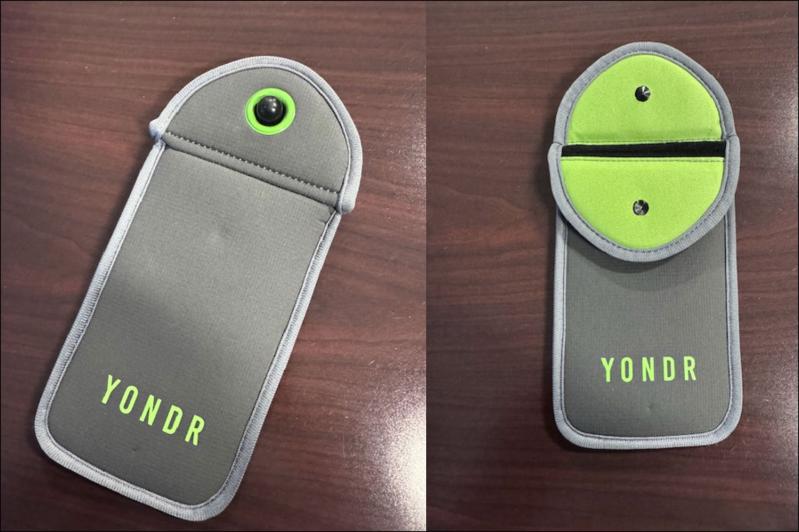East Hampton High School students and staff adjusted fairly easily to their first smartphone-free day Tuesday, the principal, Sara Smith, told the school board, with the opening day of the year serving as a sort of test for a policy mandated by the state but long planned by the administration.
“Every student was so cooperative, so respectful of the new policy. It honestly was like they had been doing it for years,” Ms. Smith said on Tuesday evening.
Under the new rules, all smartphones and internet-enabled devices must be placed in locking pouches and kept in them throughout the school day. When students arrive at the high school, phones, watches, wireless earbuds, all go into pouches that the district ordered from the Yondr company. They carry the pouches with them, but they cannot be opened until the bell rings at the end of the day.
“It worked beautifully in the morning,” Ms. Smith reported. Jill Collins, the assistant principal, had “adjusted coverage” to be sure there was enough staff assisting as students arrived for their first day of classes, and “throughout the day it was really easy.”
“I honestly thought it was going to be a much bigger deal,” said Stella Brecker, a senior and president of the student association who is serving as an ex-officio member of the school board this year. “People understood that it’s the law now.”
“The hallways, in a good way, were a little louder. Students were talking and engaging with each other” instead of checking their phones, the principal said.
The biggest hiccup of the day came at dismissal. “We did get a little backed up, so we’re adjusting our practices and procedures for that,” she said.
Student-athletes reported long lines to get out of the building to begin practice, as staff worked quickly to use magnetic keys to unlock the Yondr pouches. While internet-enabled devices are not allowed anywhere on the school campus during the instructional day, students have access to them after that, whether they are at clubs, staying for extra help, or at sports practice.
One unforeseen consequence of going smartphone and smart watch-free: “Nobody knew what time it was all day, so we are ordering new clocks,” Ms. Smith said.
The bell-to-bell smartphone ban takes different forms at the middle school and the John M. Marshall Elementary School, where students are at different developmental levels. The middle school’s previous “no-show” policy was already more restrictive than the rules for high school students. Now, internet-enabled devices must be kept in lockers all day long, the principal, Charles Soriano, told the school board Tuesday.
“We’re going to struggle a little bit,” he said, because “we do a lot of positive programming around using phones appropriately.” Smartphones are used in connection with a unit on the Hamptons International Film Festival and in health and family and consumer science classes. Having students use internet-enabled devices for those classes but then stow them away for the rest of the day, is “going to be tricky,” he said. “The logistics of that are a little complicated, but we’ll figure it out because we definitely don’t want to let go of all that positive programming. Like A.I., technology isn’t going away, it’s just a matter of using it responsibly.”
Contrary to what some might think, Mr. Soriano saw a benefit to students not having phones in a worst-case-scenario emergency like a school shooting. “We teach students to be silent, to hide,” he said, and the noise from a ringing or buzzing phone could undermine that.
The state-mandated ban may have hastened the school district’s policy, but it was welcomed by the high school principal and other members of the administration, who had already been researching the negative effects of cellphone use and how best to curtail them. “We have engaged in a lot of the research that suggests and unequivocally proves that there is a direct connection with cellphone use, particularly social media, and a rise in rates of anxiety and depression among adolescents,” Ms. Smith told The Star over the summer. “We strongly believe that limiting students’ access to that is protecting them” from those outcomes.
Also at the meeting, Adam Fine, the district superintendent, reported that, on the first day of school, district-wide enrollment was slightly down compared to the end of the 2024-25 school year. There were 1,674 students across all three schools on Tuesday: 896 at the high school, 273 at the middle school, and 505 at the elementary school. In June, there were 1,747 students in all three schools: 936 at the high school, 283 at the middle school, and 528 at the elementary school.

